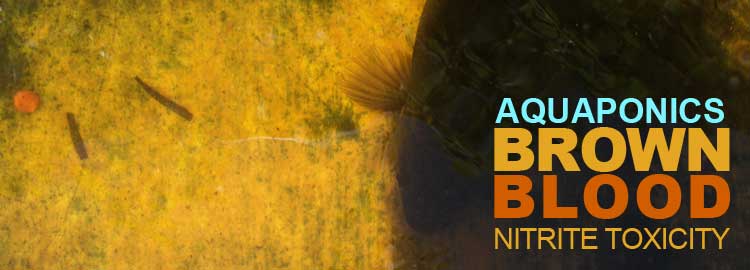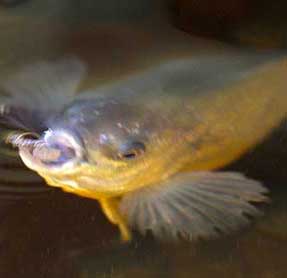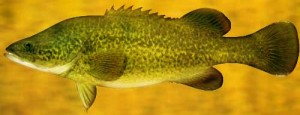Brown Blood: Nitrite Toxicity

Why do some fish remain hardy and almost bullet-proof and others die at the slightest disruption to their routine?
We have in Australia a fish well suited to Aquaponics called the Murray Cod that has the reputation of being the sort of fish that dies at the most inopportune time in backyard aquaponics systems.
Many people avoid stocking this fine eating fish in systems for that very reason.
Not all fish are the same and some fish are finally tuned specimens that are unable to tolerate the ups and down of wild pH swings and sudden surges in biological activity in recirculated aquaponics systems.
The Murray Cod is one such specimen. Having said that, experienced aquaponics enthusiasts who monitor the chemistry of their water regularly have successfully grown Murray Cod right out to maturity without problem. Its a fine dining fish but there are some guidelines to growing these fish successfully out.
So how do you get the best of health out of your fish? What are the aquaponic secrets the pros use to grow their fish well?
Nitrite Toxicity
New aquaponic system are more prone to the shock of a spike in ammonia especially if the beneficial bacteria have not had a chance to establish themselves. These natural occurring bacteria commonly need a few weeks for the system to cycle before your fish are introduced. The Ammonia spike is closely followed by a Nitrite spike which most fish can tolerate in low dosage.
However Nitrite toxicity is not limited to just new systems. Over feeding of fish and allowing the feed to settle to the bottom of the tank can result in a secondary surge resulting in sudden shocks to the well being of the fish. The plants will do just fine and keep growing. But the fish might be affected and start to die.
A sudden surge in Nitrite can also occur in anaerobic grow beds.
The media in the lower layers is too dense with fish muck. Aerobic bacteria (the oxygen loving kind) is unable to colonize this segment and a meaner strain of bacteria able to live in stagnant no oxygen conditions begins to thrive. Like an engine in reverse this strain of bacteria begins to break the muck converting the Nitrate (the good stuff that plants like to eat) back to Nitrite.
Nitrite toxicity is also known as Brown Blood disease. The blood in the fish turns brown because it cannot absorb the oxygen into the blood stream. The fish are weakened and begin to suffer. Stressed fish struggle to keep alive by frantic gill movement, loss of balance and frantic effort to suck more oxygen into their system by gulping on the surface of the water.
- Rapid gill movement
- Fish begin to gasp for air at the water surface
- Fish stay limp and listless near water outlets
- Tan or brown gills
Fish that have been exposed to low levels of Nitrite for prolonged periods of time will eventually deteriorate in condition as secondary diseases begin to make an appearance. Fin rot, ich and bacterial infections suddenly occur resulting in a spiral string of sudden fish deaths.
Monitoring your system
Try and keep your aquaponic system clean of uneaten food stuff floating at the bottom of the tank. Make sure you have enough bio-filtration (grow beds) to strip impurities out of the water when recirculating the water. The water should never look foamy and cloudy. Make sure your pump is sufficient in size and capable of turning over the water in the fish tank at least four or five times per hour in volume capacity. Make sure you regularly test the water for Nitrite. Testing for Nitrite is very simple. A $40 dollar API Master test kit will supply all the equipment necessary to conduct the test. Five drops of Nitrite test solution in a vial of fish water will instantly tell you the condition of your water by the colour. A healthy system will turn blue. A bright scarlet colour spells trouble ahead.
So how do we combat this problem and what are the solutions we can employ to grow healthy fish?
In an emergency situation, partial water changes will eliminate the Nitrite – after you’ve eliminated any food found at the bottom of the tank. The addition of salt has a beneficial influence on the fish and will reduce the influence of the Nitrite to strip oxygen from the blood cells. Increase the aeration going to the fish. If necessary an extra aerator with plenty of air bubbling in the water will help keep the fish alive.
- Change the Water
- Add salt
- Stop Feeding
- Remove uneaten food.
- Clean the tank
- Increase aeration










Recent Comments